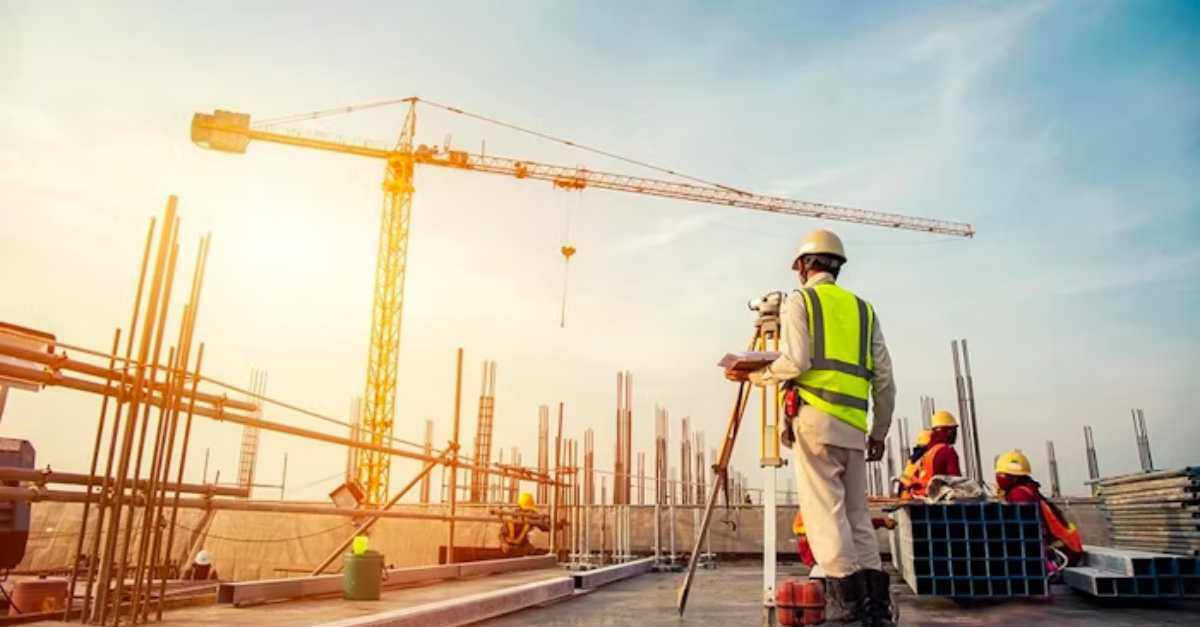
Construction Project Management: Insights, Capabilities & Tools
Understand the fundamentals of construction project management, from planning and scheduling to risk management, for effective project delivery.
Solutions
Workplace Management Solutions
Real Estate Management Solutions
Maintenance Management Solutions
Energy Management Solutions
Engineering Document Management Solutions
Asset Management Solutions
Automate campus scheduling for classes, meetings, and exams with our EMS software.
Plan and manage conferences effortlessly with EMS software to impress guests and streamline operations.
Boost workplace flexibility and maximize space use with seamless desk and room booking.
Organize workplace or campus events smoothly, creating memorable experiences.
Optimize workspace, manage allocations efficiently, and reduce costs with our space management solutions.
Deliver projects on time and within budget by improving communication, collaboration, and efficiency with our software.
Streamline lease accounting for ASC 842, IFRS, and GASB compliance.
Manage leases efficiently by tracking key dates, analyzing costs, and ensuring compliance.
Centralize data and analytics for better insights, faster negotiations, and revenue growth.
Centralize facility and asset maintenance, automate work orders, and ensure compliance with our CMMS software.
Extend asset life, reduce downtime, and prevent costly repairs with data-driven monitoring.
Prevent equipment failures and extend asset life by detecting and addressing issues early.
Make sustainable, cost-efficient energy decisions by monitoring and optimizing power consumption.
Remotely monitor and control equipment with real-time data to predict issues, boost efficiency, and reduce downtime.
Easily share and collaborate on documents, creating a single source of truth for engineers and contractors.
Manage and analyze assets across their lifecycle to schedule maintenance, reduce downtime, and extend lifespan.
Improve visibility, automate work orders, and ensure compliance for efficient facility and asset management.
Resources
Browse our full library of resources all in one place, including webinars, whitepapers, podcast episodes, and more.
Support
Looking for access to technical support, best practices, helpful videos, or training tools? You’ve come to the right place.
About Accruent
Get the latest information on Accruent, our solutions, events, and the company at large.

How can organizations best manage the construction life cycle? Begin by understanding the five individual phases and stages of the construction process.
For many organizations, the first hurdle when establishing a construction project is understanding how to be successful at the various stages of the construction process. What is the best way to begin a construction project? How do you successfully end it?
Understanding each phase of the construction life cycle requires a deep dive into the individual requirements of each stage and how they work together for the project to ultimately succeed. This is made only more complicated if an organization is still over-reliant on older or outdated solutions for construction project tracking, whether they are using an in-house solution or even just spreadsheets.
The simple question becomes: how can organizations best manage the construction life cycle from beginning to end? The first step is understanding the five individual phases and stages of the construction process.
The five phases of the construction project lifecycle are:
Like with all things, the first step to the construction life cycle is merely to begin. This may sound simple, but it is usually far from it. It is easy to come into a project with an idea. Translating that idea into actionable items requires a dedicated project team – the project will require input from each side.
Time is also of the essence. If there is a project idea in mind, it is best to immediately uncover the details rather than later set the stage for a successful project. If you are not sure when and where to begin, a feasibility test allows you to examine the project’s scope and goals and determine how realistic the project itself is.
Once the team or the feasibility test determines whether a project is worth undertaking, then the second step is the project's actual planning. In this phase, the project should be developed alongside its objectives and goals.
The planning stage may be the most critical, as it sets the foundation of the entire project. At this point in the project, your team will be tasked to define the project itself, identify timelines and uncover the project's scope from beginning to end.
It is essential not to forget the budget. The planning stage is where the budget is estimated, outlined and approved. A project team must dedicate the right time to the budget plan. It is often the most time-consuming phase in the entire project but ultimately establishes whether a project will succeed or fail.
Now is time for the most exciting phase of the construction life cycle – the project implementation. At this stage, all of the project planning and scoping is put to the test. Organizations and project teams need to ensure that their teams are on the same page, as any slight mistake in this phase can be damaging down the road.
Progress reports along the way will allow organizations to keep tabs on each part of the project, allowing project leads to make necessary adjustments along the way.
Once the project has begun in earnest comes the project performance and monitoring stage. In this stage, the project's performance is measured to ensure that it is running on schedule and within budget.
This phase requires daily supervision and a dedicated team of project and construction managers to track progress. Their job is to ensure that initial plans are up to snuff and to make any ongoing adjustments as needed. Information is vital in this stage, and it is up to the project leaders to maintain project alignment.
To wrap up the construction project life cycle is the closing or completion phase.
This is the phase the project has led to, where project leaders must be ready to offer deliverables to their clients or present a completed construction project. Project leaders take on even greater responsibility during this stage, as they must finalize each aspect of the construction process, from scheduling to budget to final touches on the building or construction site itself.
Once the final inspections have been made, and the project leader has approved the close, the project must be approved by the client or site owner. Once the client accepts, the project concludes.
Understanding the five phases of the construction life cycle is one thing -- knowing how to craft a successful construction project is another thing entirely. Many organizations find themselves bogged down in processes and implementation issues and without an understanding of why that is?
Much of the construction project cycle is dependent on monitoring project numbers and action items, then reacting accordingly. These problems range from ballooning budgets to work order failures. Even one misstep can doom a project before it takes off.
What can help solve these issues? For most organizations, the right software solution would be an immediate remedy to many of their issues. Problems are too often solved reactively, waiting for an issue to arise before taking charge to solve it. By moving to a monitoring platform with a proactive focus, organizations can get ahead of the problems before they appear.
A software solution can also speed up the various phases of the construction life cycle, from budget planning to managing change orders to streamlining project timelines. The speed and ease of a quality software solution can only make the lives of each member of the time more manageable and each phase simpler to complete.
Accruent’s construction project management solution, Lx Projects, does just that by helping organizations and construction companies improve decision-making and effortlessly manage new construction, grand openings and capital improvement projects — all on time and within budget.
Lx Projects was designed from the ground up to streamline construction projects for organizations, aiming to simplify each individual stage of the life cycle by raising visibility and moving to a proactive stance on any issues. Best of all, the solution scales with the organization – as the company grows, so does the solution's capability.
Through each phase of the construction life cycle, Lx Projects is crafted to meet the needs of project managers and construction leaders. The tool can help during all stages of construction – including design, planning, scheduling and building – and it can also help users scale their operations, control costs, realign resources and shorten construction timelines.
As each stage of the construction life cycle becomes easier to understand, so does the capabilities of project managers and construction leaders to streamline the process. From project initiation to close, organizations have the opportunity to craft quality timelines and establish project scopes to meet deadlines and save money, both in the short and long term.
Long gone are the days of companies being beholden to spreadsheets. With the introduction of best-in-class, tailored software solutions, organizations can move beyond a reactive role in their construction projects to a proactive mindset and a software solution that can take advantage.
Understand the fundamentals of construction project management, from planning and scheduling to risk management, for effective project delivery.
It may feel like out-of-control costs are unavoidable in construction and project management – but they don't have to be. Here's how to fix the ...
Here's a look at the underlying reasons for construction delays, understanding why and how they occur, and how a software system can help you meet ...
Subscribe to stay up to date with our latest news, resources and best practices